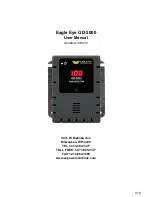
categories. If you're in an area with very little trash,
you may not want to notch out anything other
than iron. On the other hand, if you're looking for
coins in an extremely trashy area, you may even
want to notch out zinc pennies and nickels and
concentrate on the copper, clad and silver
coins. If you're looking for relics, artifacts or small
ancient coins, you'll have to keep your notches
to a minimum. The best way to find out just how
much you can notch out is to bury some sample
targets or just dig everything for awhile until you
get a feel for which target classifications will be
the most productive. If you're looking for gold
rings, go back and read the Target I.D. section
under "Search Modes." (page 23)
7.
Look for repeatable signals and don't waste
time on disappearing or one-way signals. If you
hear a good beep but can't repeat it when
you've pinpointed it in the Pinpoint mode, or if it
beeps in only one sweep direction, it's probably
a piece of trash-something you've notched out.
8.
If you're in a relatively non-trashy area, try
searching in the Autotune mode and then
identifying your targets by switching to the I.D.
mode with nothing notched out. You'll find more
and deeper targets this way.
9.
If you're having any difficulty pinpointing or
identifying a target in the l.D. mode, don't waste
any more time. Press the SEARCH/PINPOINT touch
pad for quick pinpointing, then release it for
accurate I.D.
10.
If your target disappears when you go into
the Pinpoint mode, you've probably tuned it out
by pressing the button too close to the target or
over another piece of metal. Try again, this time
pressing the PINPOINT touch pad over another
piece of ground.
11.
Don't waste a lot of time digging holes for
targets you can't find. If your hole keeps getting
OPERATING TIPS
40







































